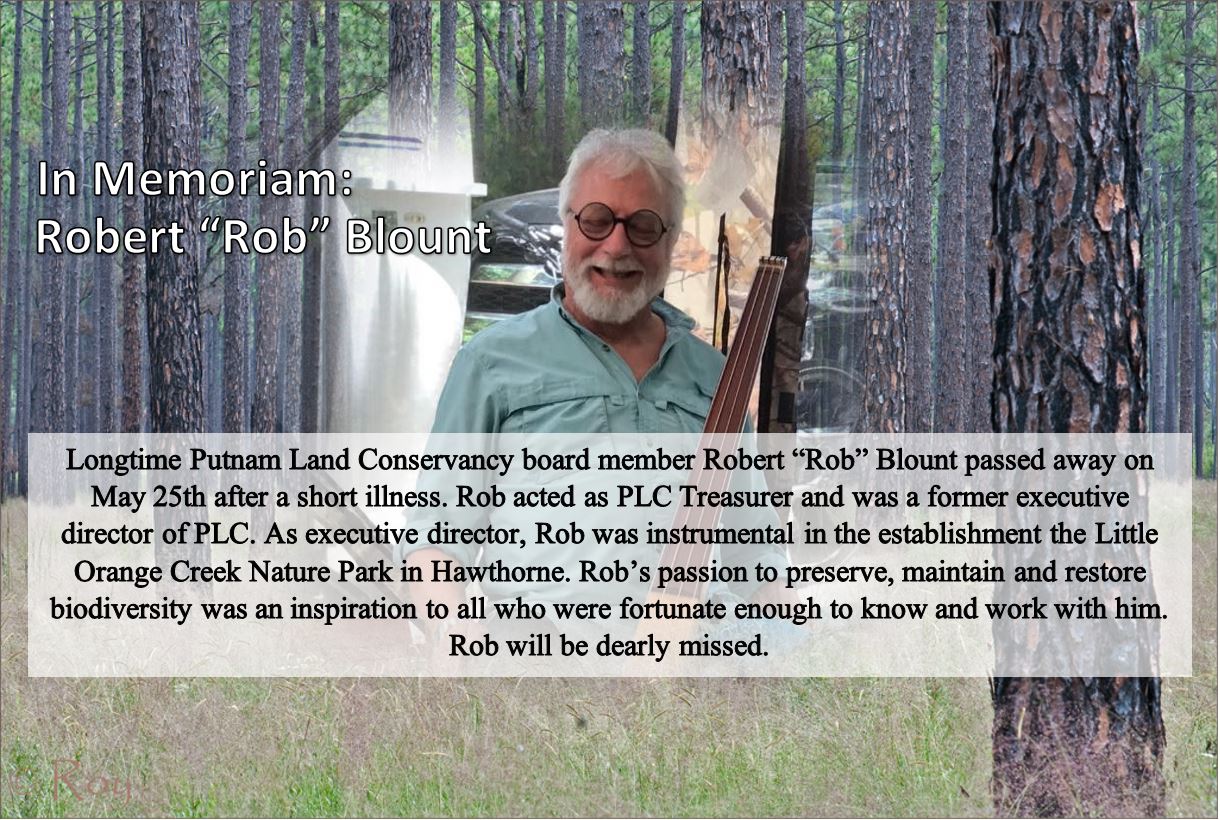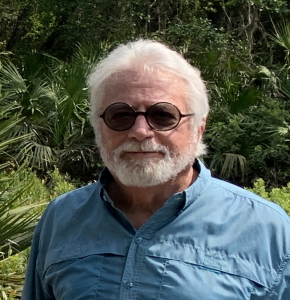Rob Blount


Robert “Rob” S. Blount III (1946-2023)
by RICHARD FRANZ
Florida Museum of Natural History, P.O. Box 117800, University of Florida, Gainesville, Florida 32611-7800, USA. [email protected]
Rob Blount of Keystone Heights, Florida, passed away on 26 May 2023 at the age of 76. Rob was born in Savannah, Georgia, on August 14, 1946, the oldest child of Robert Blount Jr. and Lorraine (Miller). Rob is survived by his wife, Andrea (Andi) Blount, and his two younger brothers, Steve and Donald Blount. Rob and Andi had been married for 54 years at the time of his death.
Rob grew up in Little Rock, Arkansas, and Clarksdale, Mississippi. He entered college at Mississippi State in Engineering, and then moved on to the College of Architecture at the University of Florida in Gainesville, where he finished his Bachelor’s degree in Art Design in 1969. Rob completed his Masters of Art degree, in Historical Administration and Public History, at Florida State University, in Tallahassee in 1992. His FSU master’s thesis focused on the history of turpentine extraction in rural Florida, which he later published as a book-length tome, entitled “Spirits of Turpentine: History of Florida Naval Stores, 1528-1950.”
I first met Rob in 1972, when he joined the Department of Interpretations at the Florida State Museum (FSM). One of his many projected tasks was to assist Exhibit-designer Dorr Dennis, Educational Curator Ed Munyer, and other members of the museum exhibits staff, in developing an array of natural history displays in the recently-constructed Florida State Museum building, on the University of Florida campus in Gainesville. Here, Rob could apply his incredible organizational skills, along with his sense of design, photographic and writing talents to aid in the creation of high-quality replicas of local North Florida habitats. As the exhibit scripts became a reality, I was invited to join the group by the Museum Director Dr. J. C. Dickinson, and the Interpretations chairperson Vince Gabianelli, to assure scientific accuracy.
The first of these walk-through habitat exhibits was a limestone cave, which opened to the public in 1974; other habitat displays soon followed, which included a mesic hard-wood forest (Hammock), xeric sandhill and scrub habitats, coral reef, mangrove swamp, and a Miocene fossil site. All of these habitats were modelled from North Florida sites, except for the coral reef display, based on a patch reef in the Florida Keys.
Upon completion of the cave exhibit, Rob decided that we needed to provide Museum docents with real experiences in outdoor habitats that mirrored the museum’s fabrication efforts. As part of this activity, he and I took our docent-educators to the Santa Fe River, limestone springs, forest sanctuaries, Cedar Keys, and active fossil digs. The first trip that we led for them was to Sunday Sink, a limestone cave in Marion County. These field trips set the stage for docents to experience the sights, smells, and sounds of real-life habitats, which they could then use to energize their visiting museum guests.
As FSM exhibits were completed, Rob’s mentor Ed Munyer advised him to look for a small museum that needed a director, and after a stint of 15-years at FSM Rob moved on to Florida Agricultural Museum in Tallahassee (1987-1993); Georgia Music Museum of Fame in Macon (1993-2000); Elliott Museum and House of Refuge in Stuart, FL (2000-2002); Tampa Bay History Center (2002-2006); and Virginia Key Beach Park Trust in Miami (2006-2009). His final museum venue was as Museum Director of Mission San Luis in Tallahassee from 2011-2016 where he oversaw this vibrant living history site. The Mission is a National Historical landmark, which is administered by the Florida Department of State, Division of Historical Resources. This site is the only reconstructed 1703 Spanish mission in Florida, and recognized for archeological and historical research.
Upon his professional retirement in 2016, Rob and his wife, Andi, returned to Keystone Heights in north Florida, where Rob commenced volunteering with Putnam Land Conservancy (PLC). The missions of this private organzation are to identify environmentally significant tracts of lands in Putnam County and find ways to insure their long-term protection. He served as treasurer at the time of his death.
Rob will be remembered as a talented administrator who generated large sums of dollars that helped to create memorable museum architectures, informative presentations, and community-enriching programs, all of which served to enhance local environmental and cultural awarenesses.
Rob had many diverse gifts. He played guitar and bass, and sang as part of several musical groups. He loved to play the Delta Blues. His various musical associations over the years provided engaging entertainment at museum events, cultural festivals, restaurants, and local art walks. His most recent musical event was with the group “Gumbo Limbo Cajun Band,” where they played at the Melrose Art Walk, two weekends prior to his death.
Rob, you will be missed.
